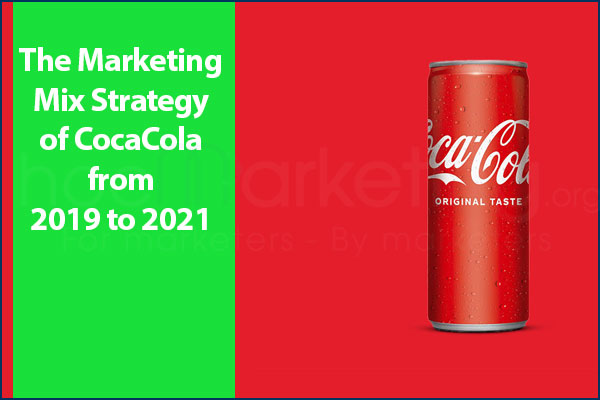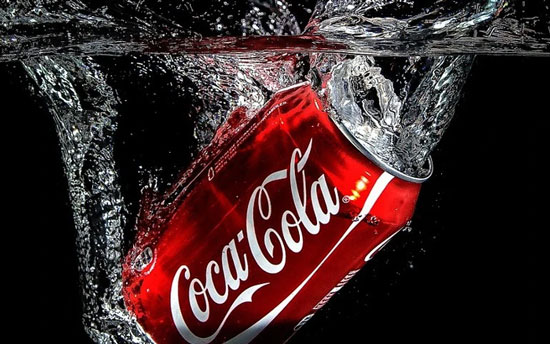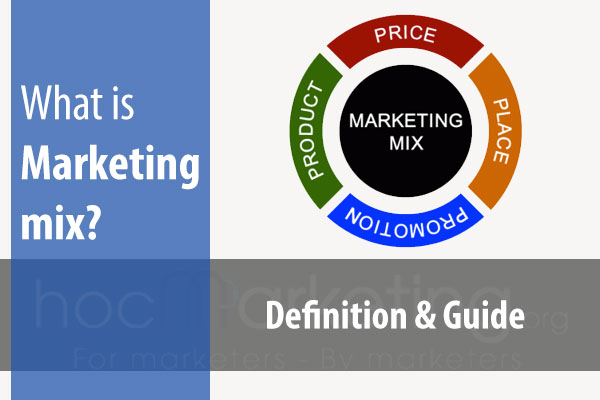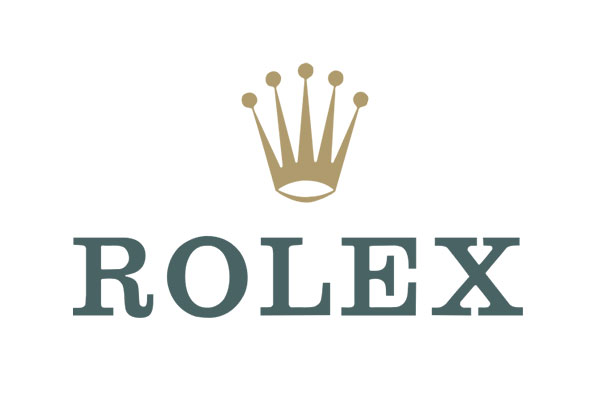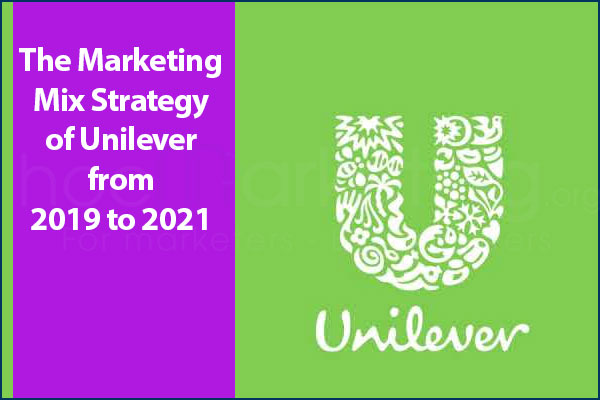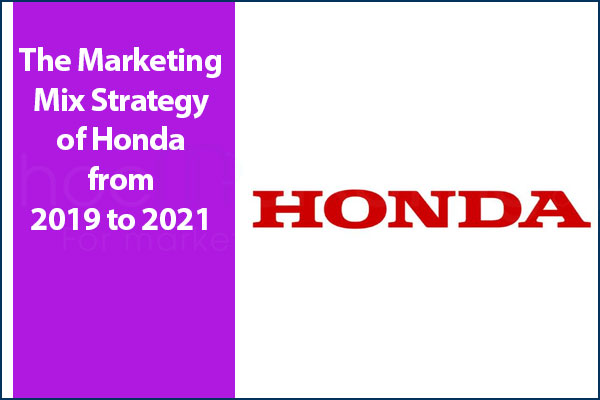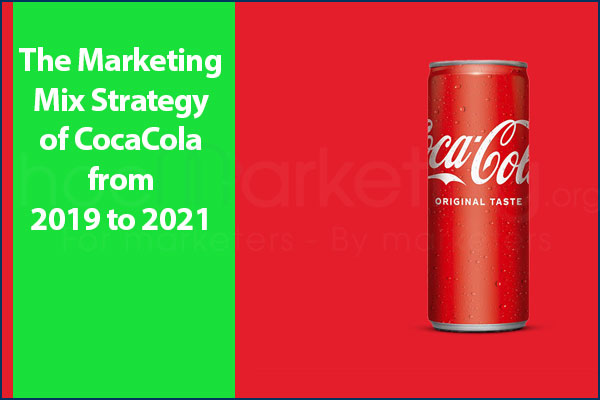
The Marketing Mix Strategy of CocaCola from 2019 to 2021

In today's world, marketing strategies play a crucial role in a company's success. One such company that has mastered the art of marketing is CocaCola. As one of the world's largest carbonated beverage companies, CocaCola has been a household name for decades.
In today's world, marketing strategies play a crucial role in a company's success. One such company that has mastered the art of marketing is CocaCola. As one of the world's largest carbonated beverage companies, CocaCola has been a household name for decades. In this blog post, we will be exploring the Marketing Mix Strategy of CocaCola from 2019 to 2021. We will take a closer look at the context of the carbonated beverage market on a global scale during this time frame and examine the typical highlights in CocaCola's Marketing Mix Strategy. Additionally, we will analyze the role of product, price, place, and promotion in CocaCola's Marketing Mix Strategy during this period. So, let's dive in and uncover the secrets behind CocaCola's successful marketing strategy.
A Brief of CocaCola
CocaCola, the world-renowned beverage brand, was founded in 1886 in Atlanta, Georgia. Since then, it has grown to become one of the most valuable brands in the world, with a presence in over 200 countries. The company produces a wide range of beverages, including carbonated soft drinks, juices, sports drinks, and bottled water.
CocaCola has a strong brand identity, with its iconic red and white logo and memorable advertising campaigns. The brand is known for its commitment to sustainability and social responsibility, with initiatives aimed at reducing its carbon footprint and promoting healthy living.
Over the years, CocaCola has faced challenges in the form of changing consumer preferences, health concerns, and increased competition in the beverage market. Despite these challenges, the company has continued to innovate and adapt, introducing new products and marketing strategies to maintain its position as a global leader in the beverage industry.
The context of carbonated beverage market 2019 - 2021 in terms of global scale
The global carbonated beverage market has undergone significant changes in the past few years. Despite the growing awareness of health concerns associated with sugary drinks, the demand for carbonated beverages continues to grow.
In 2019, the global carbonated beverage market was valued at USD 392.6 billion, and it is expected to reach USD 412.5 billion by the end of 2021, registering a CAGR of 1.7% during the forecast period. The market is dominated by the Asia-Pacific region, followed by North America and Europe. The rising disposable income, the growing population, and the increasing urbanization are the major factors driving the growth of the carbonated beverage market in these regions.
However, the market is also facing several challenges, such as the increasing health concerns among consumers, the rising popularity of healthy alternatives like juices and smoothies, and the increasing taxes on sugary drinks imposed by governments worldwide. To tackle these challenges, companies like CocaCola are adopting innovative strategies to stay competitive in the market.
CocaCola has been focusing on diversifying its product portfolio by introducing new flavors and healthier options like CocaCola Zero Sugar and Diet Coke. The company has also been investing heavily in marketing campaigns to promote its products and reach a wider audience.
In conclusion, the carbonated beverage market is experiencing both growth and challenges. Companies like CocaCola must adopt a strategic approach to stay competitive in the market and meet the changing demands of consumers.
Typical highlights in CocaCola's Marketing Mix Strategy 2019 - 2021
CocaCola is a well-known brand that has dominated the carbonated beverage market for many years. Its Marketing Mix Strategy has played a significant role in maintaining its position in the market. Here are some typical highlights of CocaCola's Marketing Mix Strategy from 2019 to 2021.
1. Branding
CocaCola has always emphasized on building its brand image. It has done this by using creative and innovative marketing campaigns that appeal to its target audience. For instance, in 2019, CocaCola launched a campaign called "Share a Coke," which involved printing customer names on the bottles. This personalized approach helped the brand connect with its consumers on a more emotional level.
2. Product diversification
In recent years, CocaCola has expanded its product line to cater to changing consumer preferences. For instance, in 2020, the company launched CocaCola Energy, a caffeinated drink that targets the energy drink market. The company has also introduced low-sugar and no-sugar options to cater to health-conscious consumers.
3. Digital marketing
CocaCola has been actively using digital channels to promote its products. It has a strong social media presence and uses influencers to reach its target audience. In 2020, the brand launched a virtual music festival called "CocaCola Music Festival" to engage with its consumers during the pandemic.
4. Sponsorship
CocaCola has been actively sponsoring events and sports teams to increase its brand visibility. For instance, in 2019, the company signed a sponsorship deal with the English Premier League, which helped increase its brand exposure in the UK market.
In conclusion, CocaCola's Marketing Mix Strategy from 2019 to 2021 has focused on branding, product diversification, digital marketing, and sponsorship. These highlights have helped the company maintain its position as a market leader in the carbonated beverage industry.
Product in CocaCola's Marketing Mix Strategy 2019 - 2021
CocaCola's product strategy has remained consistent throughout the years, with the brand focusing on delivering quality and consistency to its customers. The company's product line includes a wide range of carbonated and non-carbonated beverages, including CocaCola Classic, Sprite, Fanta, Minute Maid, and Powerade, among others.
In recent years, CocaCola has focused on diversifying its product line to cater to evolving consumer tastes and preferences. The company has introduced new flavors and variants of its existing products, such as CocaCola Zero Sugar, Sprite Ginger, and Fanta Green Apple.
Moreover, CocaCola has expanded its product offerings beyond carbonated beverages to include healthier options such as bottled water and juices. CocaCola's acquisition of Costa Coffee in 2019 also enabled the company to enter the coffee market and offer a wider range of beverage options to its customers.
CocaCola's product strategy also emphasizes sustainability and responsible production. The company has pledged to use 50% recycled materials in its packaging by 2030 and has introduced new eco-friendly packaging options, such as the PlantBottle made from renewable resources.
Overall, CocaCola's product strategy has focused on innovation, diversification, and sustainability, enabling the company to stay relevant and meet the changing needs of its customers.
Price in CocaCola's Marketing Mix Strategy 2019 - 2021
Pricing is a crucial aspect of CocaCola's marketing mix strategy, as it plays a significant role in determining the brand's position in the highly competitive carbonated beverage market. In recent years, CocaCola has implemented various pricing strategies to maintain its market share and appeal to customers.
One of the primary pricing strategies used by CocaCola is Value-Based Pricing. This approach involves setting prices based on the perceived value of the product to the customer. CocaCola aims to provide a high-quality product at a reasonable price to attract and retain customers. This strategy has been successful for CocaCola, as it has been able to maintain a competitive edge in the carbonated beverage market.
Another pricing strategy used by CocaCola is Penetration Pricing. This involves setting low prices to attract customers and gain market share. CocaCola has used this strategy in emerging markets to establish a foothold in the market and gain a competitive advantage. The company then gradually increases prices as it becomes more established in the market.
CocaCola has also implemented a Skimming Pricing strategy, which involves setting high prices to maximize profit in the short term. This strategy is typically used for new products that have a unique selling point or appeal to a niche market. CocaCola has used this strategy for its premium products, such as CocaCola Life and CocaCola Zero Sugar.
In conclusion, CocaCola's pricing strategies have played a vital role in its marketing mix strategy from 2019 to 2021. The company has used a value-based pricing approach to provide high-quality products at reasonable prices and has used penetration pricing to establish a foothold in emerging markets. Additionally, CocaCola has used skimming pricing for its premium products to maximize profits in the short term. These pricing strategies have enabled CocaCola to maintain its position as a market leader in the carbonated beverage industry.
Place in CocaCola's Marketing Mix Strategy 2019 - 2021
CocaCola is a global brand that has a strong presence in over 200 countries. The company's marketing mix strategy for 2019-2021 emphasizes the importance of distribution channels and availability of its products to reach its target customers.
In terms of place, CocaCola has adopted an extensive distribution network that ensures its products are easily accessible to customers. The company has a broad range of channels that include retail stores, vending machines, restaurants, and online platforms.
CocaCola has also invested in innovative technologies to enhance product distribution. For instance, the company has developed a smart vending machine that allows customers to purchase products using their smartphones. This approach has increased customer convenience and accessibility to CocaCola products.
Additionally, CocaCola has focused on expanding its product offerings to cater to different consumer preferences. The company has introduced new flavors and packages to appeal to diverse markets, including health-conscious consumers.
In conclusion, CocaCola's marketing mix strategy for 2019-2021 has prioritized product availability and accessibility through an extensive distribution network. The company has also invested in innovative technologies and product diversification to cater to diverse consumer preferences.
Promotion in CocaCola's Marketing Mix Strategy 2019 - 2021
Promotion is a crucial element in CocaCola's marketing mix strategy for 2019-2021. The company has always been known for its innovative and creative advertising campaigns that have captured the attention of consumers worldwide. In this section, we will explore some of the promotion strategies that CocaCola has used in recent years.
One of the most significant promotion strategies that CocaCola has implemented is the use of social media. The company has a strong presence on platforms like Facebook, Twitter, and Instagram, where it engages with its customers and promotes its products. CocaCola has also used social media influencers to promote its products, which has helped the company reach a wider audience.
Another promotion strategy that CocaCola has used is sponsorship of major events. The company has sponsored events like the FIFA World Cup, the Olympics, and the Super Bowl, which has helped it increase its brand awareness and reach a massive audience. CocaCola has also sponsored music festivals and concerts, which has helped it connect with younger consumers.
CocaCola has also used experiential marketing to promote its products. The company has created pop-up stores and experiential events where customers can try its products and engage with the brand. This strategy has helped CocaCola create a unique brand experience and connect with its customers on a personal level.
Finally, CocaCola has used traditional advertising methods like television and print ads to promote its products. The company has created some iconic ads over the years, including the "Share a Coke" campaign, which encouraged customers to share a coke with their friends and family.
In conclusion, promotion is a crucial element in CocaCola's marketing mix strategy for 2019-2021. The company has used social media, sponsorship of major events, experiential marketing, and traditional advertising methods to promote its products and connect with its customers. CocaCola's innovative and creative promotion strategies have helped it maintain its position as one of the world's leading beverage companies.
Summary
In conclusion, CocaCola's marketing mix strategy from 2019 to 2021 has been focused on enhancing the brand's global presence and adapting to changing market trends in the carbonated beverage industry. The company's emphasis on product innovation, pricing strategies, distribution networks, and promotional activities has helped it maintain its position as a market leader.
CocaCola's ability to leverage its brand equity and customer loyalty has been a key factor in its success. By constantly evolving and adapting its marketing mix strategy, CocaCola has been able to stay relevant and competitive in a dynamic and challenging marketplace.
Moving forward, it will be interesting to see how CocaCola continues to innovate and evolve its marketing mix strategy to stay ahead of the competition and meet the changing needs and preferences of consumers worldwide.
